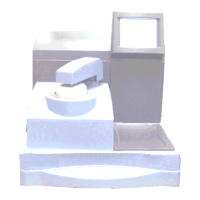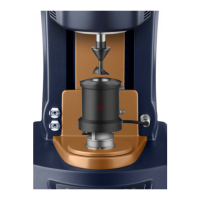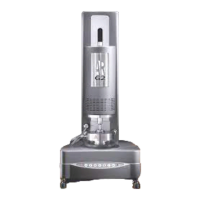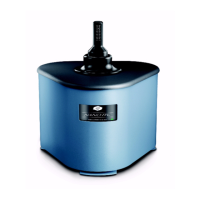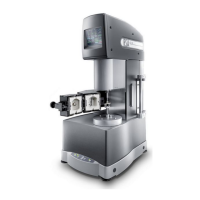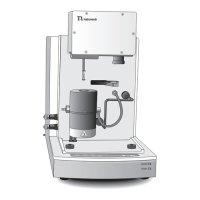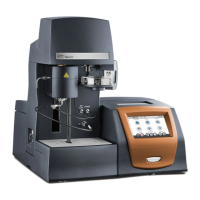DSC Q Series Getting Started Guide
10
CAUTION: Drying out the DSC cell may be needed, if it has been exposed to humid
conditions. It is important to be certain that the instrument ground is adequately
connected to the facilities ground for safe operation.
Run the "Cell/Cooler Conditioning" test template to dry out the cell:
1 Ramp at 10°C/min to 400°C
2 Isothermal for 120 min.
Handling Liquid Nitrogen
Someofthecoolingaccessoriesusethecryogenic(low‐temperature)agent,liquidnitrogen,forcooling.Because
ofitslowtemperature [‐195°C(‐319°F)],liquidnitrogenwillburntheskin.Whenyouworkwithliquidnitrogen,
usethefollowingprecautions:
WARNING: Liquid nitrogen boils rapidly when exposed to room temperature. Be certain
that areas where liquid nitrogen is used are well ventilated to prevent displacement of
oxygen in the air.
1. Weargogglesorafaceshield,gloveslargeenoughtobere
movedeasily,andarubberapron.Forextra
protection,wearhigh‐topped,sturdyshoes,andleaveyourpantlegsoutsidethetops.
2. Transfertheliquidslowlytopreventthermalshocktotheequipment.Usecontainersthathavesatisfactory
low‐temperatureproperties.Ensurethatclosedcontainershaveventstorelievepressure.
3.
Thepurityofliquidnitrogendecreaseswhenexposedtoair.Iftheliquidinacontainerhas beenopento
theatmosphereforaprolongedperiod,analyzethe remainingliquidbeforeusingitforanypurposewhere
highoxygencontentcouldbedangerous.
WARNING:
Potential Asphyxiant
Liquid nitrogen can cause rapid suffocation without warning.
Store and use in an area with adequate ventilation.
Do not vent the Liquid Nitrogen Cooling System (LNCS) container in confined
spaces.
Do not enter confined spaces where high concentrations of nitrogen gas may be
present unless the area is well ventilated.
Thewarningaboveappliestotheuseofliquidnitrogen.Oxygendepletionsensorsaresometimesutilizedwhere
liquidnitrogenisinuse.

